Coverage Control in Sensor Networks (Team PDFWriters)
Preface
Audience
Book Overview
Acknowledgments
About the Author
Contents
Acronyms
Part I: Introduction
Introduction
Sensors
Sensor Nodes
Microcontroller Unit
Memory
Sensor Unit
Communication Unit
Power Unit
Sensor Networks
Sensor Network Scenarios
Homogeneous vs. Heterogenous Networks
Stationary vs. Mobile Networks
Single-Hop vs. Multi-Hop Networks
Sensor Network Applications
Military Applications
Environmental Applications
Industrial Applications
Home Applications
Medical Applications
Challenges and Issues
Sensor Network Challenges
Energy Efficiency
Network Autonomy
Network Scalability
Fault Tolerance
Data Accuracy
Information Security
Key Research Issues
Node System
Communication Protocols
Middleware Services
References
Sensor Coverage Model
Motivations
Sensor Coverage Models
Boolean Sector Coverage Models
Boolean Disk Coverage Models
Attenuated Disk Coverage Models
Truncated Attenuated Disk Models
Detection Coverage Models
Estimation Coverage Models
References
Network Coverage Control
Motivations and Objectives
Notes and Comments
Coverage Control in the Protocol Architecture
Notes and Comments
Design Issues of Network Coverage Control
Coverage Type
Deployment Method
Node Heterogeneity
Activity Scheduling
Coverage Degree
Coverage Ratio
Network Connectivity
Performance Metric
A Taxonomy for Network Coverage Problems
Point Coverage Problems
Area Coverage Problems
Barrier Coverage Problems
References
Part II: Target Coverage Problems
Node Placement Optimization
Node Placement as the Set-Covering Problem
Optimal Sensor Placement Problems
Modeling Node Placement
Approximation Algorithms
Greedy Algorithm
Simulated Annealing
Genetic Algorithm
Other Placement Problems
Discriminative Coverage
Detection Coverage
References
Coverage Lifetime Maximization
Maximizing Target Coverage Lifetime
Disjoint Set Cover
Maximal Disjoint Set Cover for Complete Target Coverage
Disjoint Set K-Cover for Minimum Coverage Breach
Nondisjoint Set Cover
Maximum Set Cover (MSC) for Complete Target Coverage
Set K-Cover for Minimum Coverage Breach
Notes and Comments
Localized Algorithms
Other Variants
Maximizing Connected Target Coverage Lifetime
Maximum Cover Tree (MCT) Problem for Connected Complete Target Coverage
Notes and Comments
References
Part III: Area Coverage Problems
Critical Sensor Density
Deterministic Node Placement
Node Placement in Two-Dimensional Field
Node Placement in Three-Dimensional Space
Notes and Comments
Random Node Deployment
Vacancy Analysis
Crossing-Based Approach
Grid-Based Approach
Numerical Example
Notes and Comments
References
Sensor Activity Scheduling
Assumptions and Objectives
Preserving Complete Area Coverage
Redundancy Check Methods
Sponsored Sector
Perimeter Coverage
Crossing Coverage
Voronoi Diagram Vertices and Intersections
Activity Scheduling Procedures
Self-Inactivation
Sequential Activation
Example Scheduling Protocols
Coverage Configuration Protocol (CCP)
Optimal Geographical Density Control (OGDC)
Volunteer Phase
Decision Phase
Notes and Comments
Preserving Partial Area Coverage
Random Independent Sleeping
Neighbor Based Scheduling
Neighbor Distance-Based Scheduling
Neighbor-Number-Based Scheduling
Example Scheduling Protocols
Probing Environment and Adaptive Sleeping (PEAS)
Layered Diffusion-based Coverage Control (LDCC)
Basic Idea
Protocol Description
Notes and Comments
Preserving Area Coverage and Network Connectivity
Relation Between Area Coverage and Network Connectivity
Connected Coverage Scheduling
Activate Extra Nodes
Select Connected Nodes
Notes and Comments
References
Node Movement Strategy
Healing Coverage Hole
Hole Detection and Size Estimation
Destination Selection
Movement Strategy
Optimizing Area Coverage
Coverage Pattern Based Movement
Virtual Force Based Movement
Grid Quorum Based Movement
Improving Event Coverage
References
Part IV: Barrier Coverage Problems
Build Intrusion Barriers
Sensor Barrier for Intrusion Detection
Optimal Node Placement for k-Barrier Coverage
Existence Check of k-Barrier Coverage
Critical Density for Providing k-Barrier Coverage
Sensor Scheduling for Barrier Construction
Sensor Barrier with Mobile Nodes
References
Find Penetration Paths
Maximal Breach Path
Maximal Support Path
Exposure Path
Detection Path
Analysis for Path Characteristics
References
Appendix A Voronoi Diagram and Delaunay Triangulation
Voronoi Diagram
Delaunay Triangulation
References
Index
Color Plates
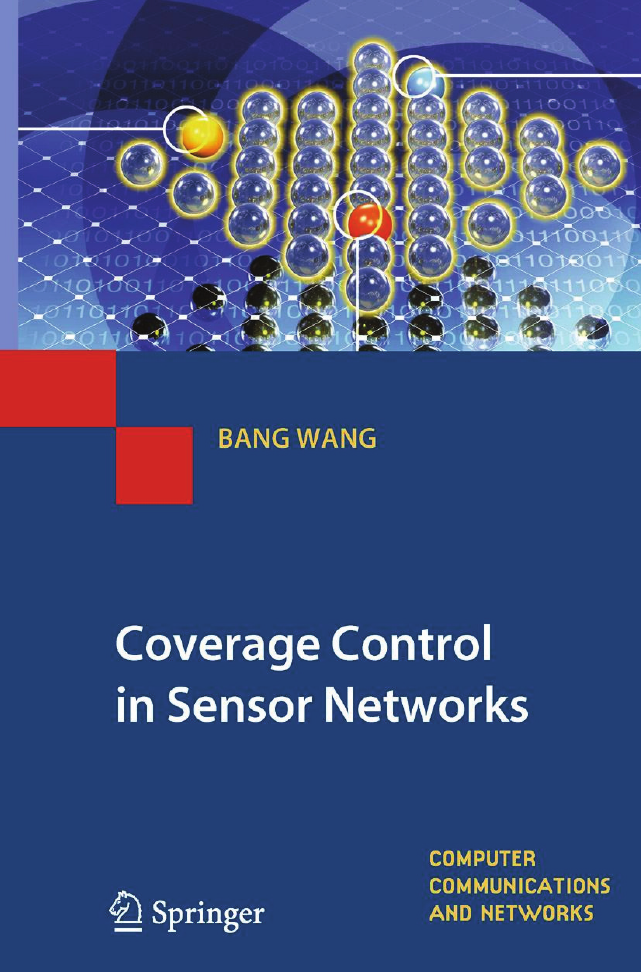

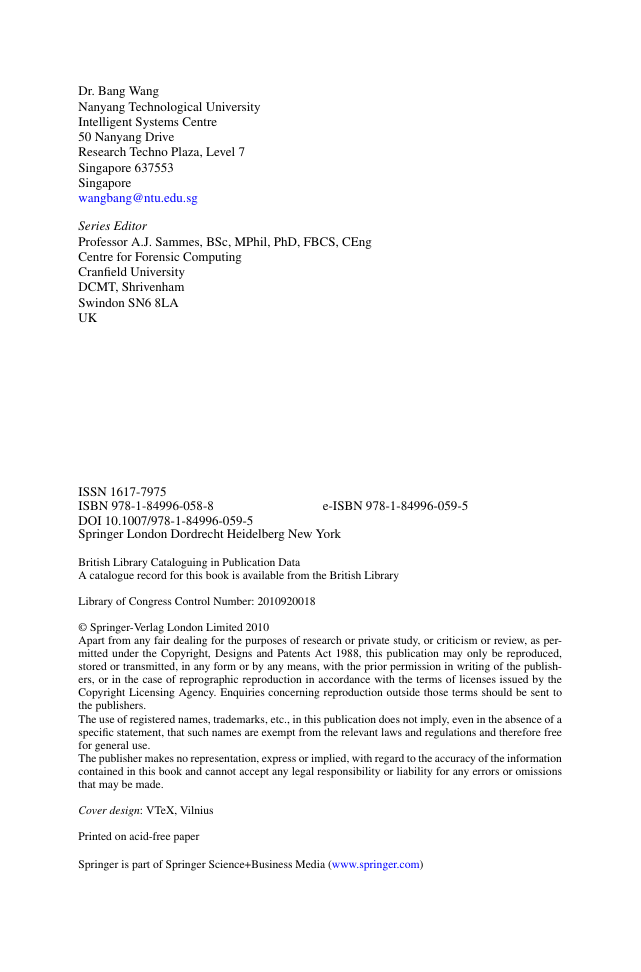

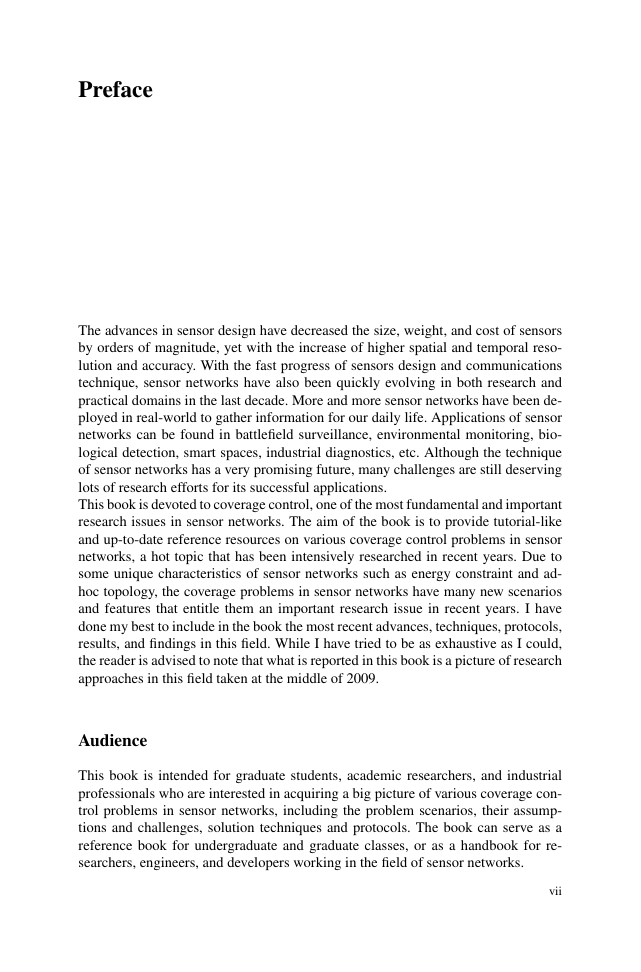
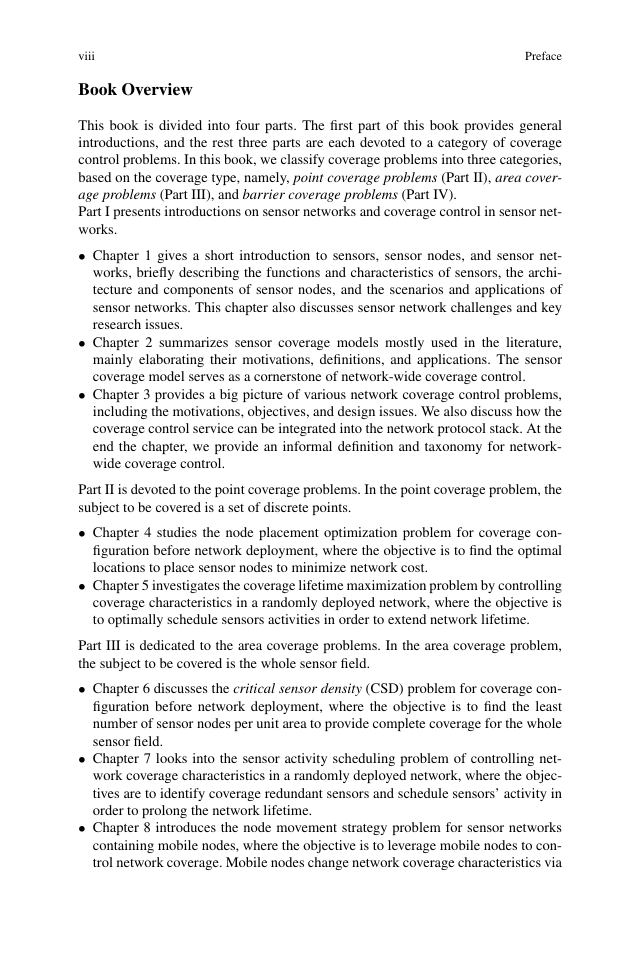
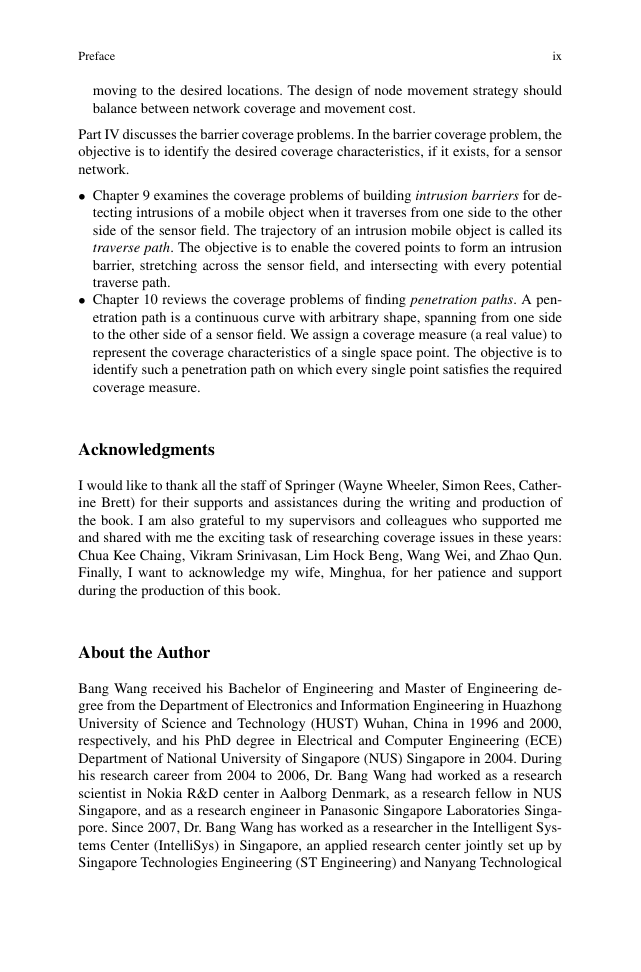









 2023年江西萍乡中考道德与法治真题及答案.doc
2023年江西萍乡中考道德与法治真题及答案.doc 2012年重庆南川中考生物真题及答案.doc
2012年重庆南川中考生物真题及答案.doc 2013年江西师范大学地理学综合及文艺理论基础考研真题.doc
2013年江西师范大学地理学综合及文艺理论基础考研真题.doc 2020年四川甘孜小升初语文真题及答案I卷.doc
2020年四川甘孜小升初语文真题及答案I卷.doc 2020年注册岩土工程师专业基础考试真题及答案.doc
2020年注册岩土工程师专业基础考试真题及答案.doc 2023-2024学年福建省厦门市九年级上学期数学月考试题及答案.doc
2023-2024学年福建省厦门市九年级上学期数学月考试题及答案.doc 2021-2022学年辽宁省沈阳市大东区九年级上学期语文期末试题及答案.doc
2021-2022学年辽宁省沈阳市大东区九年级上学期语文期末试题及答案.doc 2022-2023学年北京东城区初三第一学期物理期末试卷及答案.doc
2022-2023学年北京东城区初三第一学期物理期末试卷及答案.doc 2018上半年江西教师资格初中地理学科知识与教学能力真题及答案.doc
2018上半年江西教师资格初中地理学科知识与教学能力真题及答案.doc 2012年河北国家公务员申论考试真题及答案-省级.doc
2012年河北国家公务员申论考试真题及答案-省级.doc 2020-2021学年江苏省扬州市江都区邵樊片九年级上学期数学第一次质量检测试题及答案.doc
2020-2021学年江苏省扬州市江都区邵樊片九年级上学期数学第一次质量检测试题及答案.doc 2022下半年黑龙江教师资格证中学综合素质真题及答案.doc
2022下半年黑龙江教师资格证中学综合素质真题及答案.doc